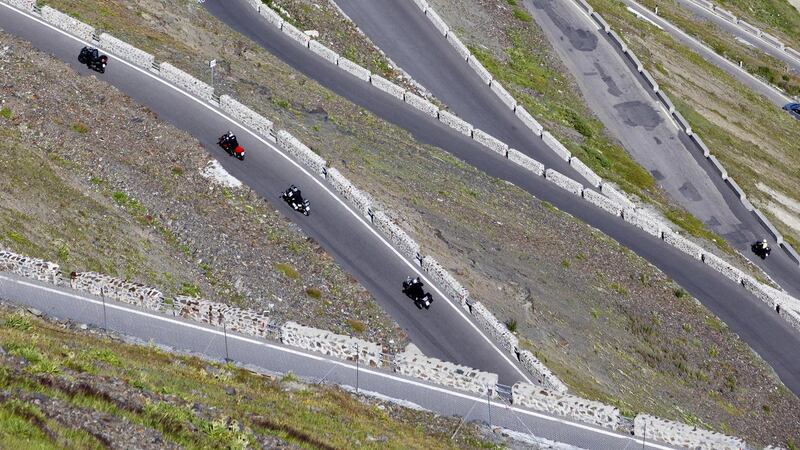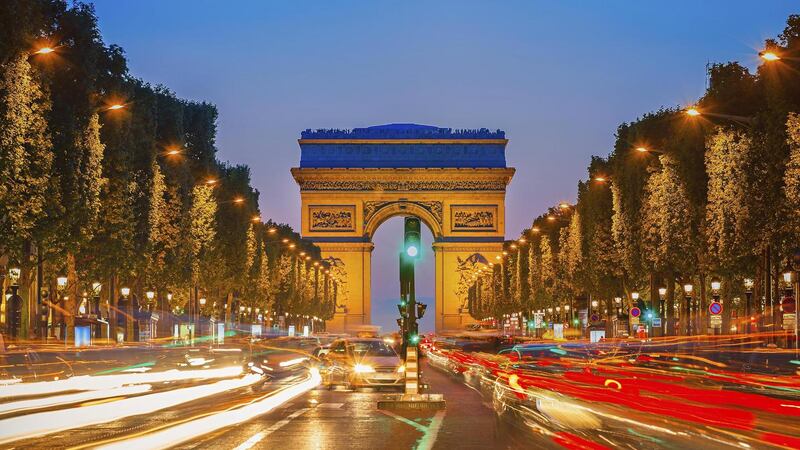‘Drive carefully. Chicken nests in formation ahead!”
This threw me. I had been doing great thus far. I had managed the conversation in French about the hire car and had successfully asked directions once. My wife was actually impressed.
I was just getting cocky about it when this apparent poultry alert reminded me that I was not in familiar surroundings. I was picking my way through a slightly dodgy detour to get back on to the A9 motorway that runs across the south of France.


It is a beautiful part of the world and the roads make it easy. On the motorways especially, you quickly forget that you are abroad. The locals are reasonably friendly provided you don’t bring bad Irish motorway habits with you. Our tendencies to hog the outer lane or to switch lanes without indicating do not go down well.
Perhaps it’s the tolls that have them grumpy. The Autoroutes are peppered with them and they really add up. As a rule of thumb it is usually between 7-10 cent per kilometre travelled, and add about half that again if you are towing a caravan.
I don’t do caravans, but I was on a long enough trip. We had flown to Carcassonne in the southwest and were making our leisurely way to Toulon to yell at Leinster rugby players. The 375km trip cost us nearly as much in tolls as it did in fuel: €31.
Not all stretches are the same. For the first part of the trip we scarcely saw a toll, but once east of Montpellier those péages gantries seemed to come along every five minutes. They are also surprisingly awkward; long queues and slow service of the kind that would have got an M50 toll operator lynched and thrown off the bridge back in the day.
I’m a veteran of quite a few European trips at this stage and I am far less intimidated than I used to be about driving on the wrong side of the road. By and large you are just following the car in front and it is not a problem. You are much more likely to be caught out later in the holiday. You’ve settled in and you are comfortable, then you emerge from a car park or hotel entrance and your first instinct is to look in the wrong direction.
Motorways and major towns can be scary. You have to be reasonably assertive on the roads and take your space when it is available; it is not for the novice driver. It may feel a bit obnoxious by Irish standards, but that is what local drivers expect. If you are timid you are likely to get into trouble.
We are spoilt in Ireland because our motorways are new and feel comfortable in terms of lane widths and hard shoulders, compared to Spain especially. I saw a truck driver trying to change a wheel near Barcelona a year or so ago on a hard shoulder that was only half the width of his vehicle.
What you do find are plentiful good quality service areas (National Roads Authority please take note).
I drove in northern Italy a number of years ago and it is a Mecca for car nuts. At one stage, as we sat in traffic in our diesel Ford Fiesta hire car, I noted that the car in front and the two cars behind me were all Ferraris. We also took a spin up into the Italian Alps. I gather the scenery was lovely; I didn't get to see it. Along twisted mountain roads that looked straight out of The Italian Job , my abiding memory was of dodging the bikers flinging themselves into hairpin bends. I half expected to see piles of smashed bikes at the base of the cliffs.
I have probably put up more miles overall on Spanish motorways than anywhere else. While a good deal cheaper than France, they, too, are sprinkled with toll booths. Often the toll itself is set by by-laws or converted from old peseta or franc denominations, hence you get utterly stupid charges like €2.56 that have tourists wrestling for small coins.
The Spanish have got their act together more recently in terms of enforcement. If you haven’t been in a while, you might be tempted to treat their speed-camera signs as just roadside decoration. A mistake – both the Spanish and French authorities can and do pursue you, and you will get an unpleasant demand in the post weeks later for anywhere between €45 and €80.
We used to joke that you never saw a Spanish car without a dent on it somewhere. Certainly you have to keep that hire car tucked away in a neat spot because the chances of getting a wing-mirror or a light knocked out are high. This may not be life-threatening but it can lead to arguments with the car hire company.
In fact we hear a lot about car-hire companies abroad from AA members. Regular complaints are made about extra charges for baby seats, thumping great “excess” figures in the event of minor damage, and the cost of adding an extra driver.
On that trip to France, for example, we had to pick one driver because adding a partner was ridiculously expensive. We were quoted €14 per day. That is the equivalent of more than €5,000 a year to add a spouse as a named driver, something that is usually free on an ordinary car-insurance policy.
At least you could see that one coming. My most serious row with a (reputable) car-hire company involved alleged damage to the car. We found out a month after we were back in Ireland that they had charged €200 to our credit card to cover fictitious “damage repair”. We got the money back but not without having to fight for it.
The lesson is that you should always make sure that when you return the car you get a signed docket from the car-hire rep to state that the car is fine. I no longer trust those key-return boxes; I now get a signature and take a few quick photos on the phone.
I have also found the police in Spain and in France to be very on the ball.
Some national clichés hold true. Whenever we met a Spanish cop we always found them to be friendly and informal. The French traffic police are far less sympathetic, and will make you feel as if you are one careless answer away from having French justice fall on you like a metric tonne of concrete.
Off the road, French police are very helpful. In fact I got friendly enough in the course of asking directions walking through Toulon as to ask the gendarme if he had any idea what a road sign warning about nesting chickens might mean.
He did, and enlightened me: “Nid de poule” or “chicken nest” is the word the French use for pothole.
Some problems it seems are universal.
Conor Faughnanis director of consumer affairs at AA Ireland









